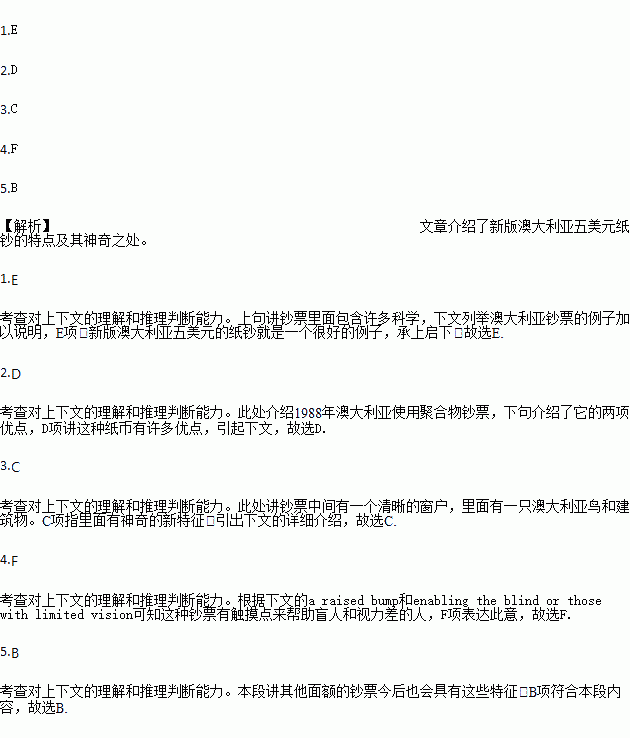题目内容
You may use banknotes every day. But did you know that there is a lot of science behind the money? 1.
Australia was the first country to use polymer(聚合物)banknotes in 1988. 2.
They can stop water from making them wet. They are also cleaner because bacteria don’t grow easily on them.
Now, the Australians have improved their banknotes again by creating a new 5-dollar note. The new one has a clear window in the middle in which there are pictures of an Australian bird and a building. 3.
Tilt (倾斜)the note a little and you will see the bird flapping its wings as if trying to fly away. Turn the note from side to side and you will notice the building come to life and spin. While these features are impressive and entertaining, that was not the reason why the Australian Government spent ten years perfecting them. Their primary purpose was to make it impossible to fake a banknote.
4. The new $ 5 bill now has a raised bump alongside the two long edges, enabling the blind or those with limited vision, to quickly determine its value.
The Australian government will give the new 10-dollar note the same features in a year’s time. 5.
A. Note makers still have a long way to go.
B. Other notes will have them in the future.
C. The magic of the new features lies in them.
D. They have many advantages over paper notes.
E. The new Australian 5-dollar note is a good example.
F. The new note is also the first touchable Australian banknote.
G. Their material and pattern set them apart from ordinary banknotes.


 ),并在其下面写出该加的词。删除:把多余的词用(\)划掉。修改:在错的词下画一横线,并在该词下面写出修改后的词。
),并在其下面写出该加的词。删除:把多余的词用(\)划掉。修改:在错的词下画一横线,并在该词下面写出修改后的词。